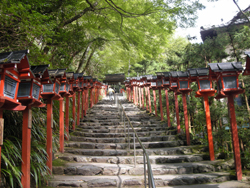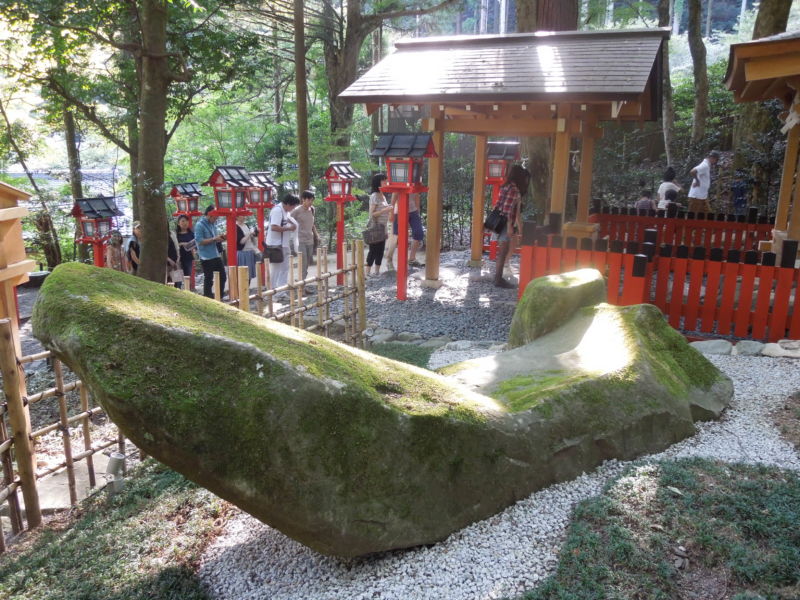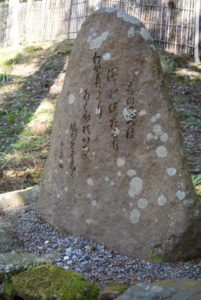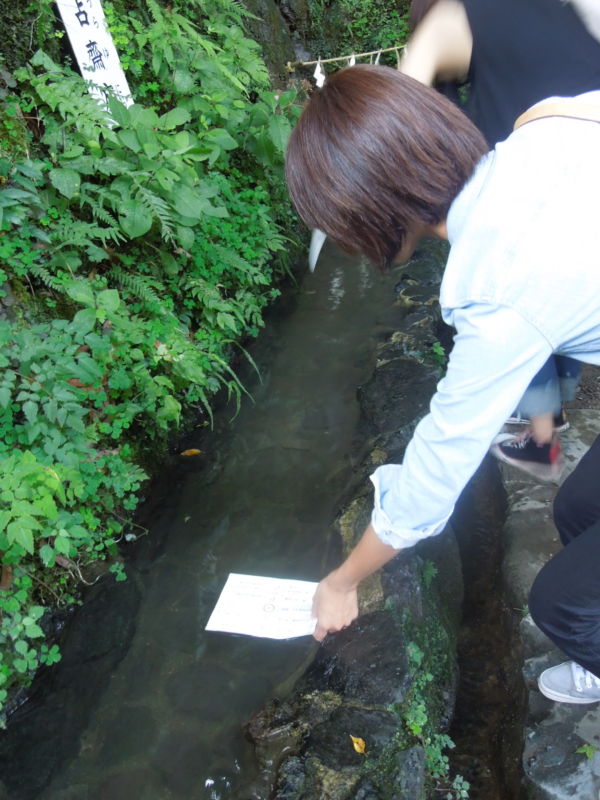
Yellow Boat
Kifune Shrine to the north of Kyoto stands in the village of Kibune, which is why many Japanese mistakenly call it Kibune Jinja. The shrine however insists on the proper pronunciation of Kifune – meaning, Yellow Boat.
The shrine is ancient and was once highly ranked. Still today it’s noted for its close connection with water and the rain kami, with streams cascading down hilly surrounds. The theme is maintained in the fortune slips that have to be immersed in water before they become legible.
The origin of the shrine concerns the eponymous Yellow Boat, for it’s said in ancient times that an imperial princess came by boat from Osaka to seek the source of the river. She managed to get all the way up to the slopes of Kibune, and the spot at which she stopped is commemorated now with a plaque that stands in the upper part of the shrine (Okunomiya). There you will find a rock boat, representing the one that she supposedly used. (One presumes the original had a yellowish tint.)

The first question that comes to mind is why would anyone choose to travel in a rock boat? You could hardly imagine anything less practical, guaranteed to sink rather than float. The answer lies in the elevation of the princess to an ancestral kami. Since kami are immortal, they are associated with the most enduring of substances – rock. (For more on the subject, see this posting.)
The rock boat that stands in Kifune’s upper shrine is in fact a modern addition, for it was found in the mountains in 1996 with a shape suggestive of an ancient boat. Because of Shinto’s inclination to take chance and coincidence as signs of the divine, the rock was seen as sacred and installed at the shrine as a symbolic feature. You’ll sometimes see people in prayer before it.

Culture rock
In the same small compound of Okunomiya is a rock of another kind, covered with the inscription of a poem by famed Heian court lady, Izumi Shikibu. She was twice married, the second time to the brother of her dead husband, and is closely associated with love – passionate love and broken love. Once when she was having relationship trouble (the husband she loved had turned his attentions to another), she came on pilgrimage here and composed a poem about the fireflies she saw.
Reflecting on my life –
the fireflies above the stream
seem to be my yearning soul
wandering free of my body
物思へば澤の螢も我身よりあくがれ出づる玉かとぞみる
mono omoeba sawa no hotaru mo wagami yori akugare izuru tama ka to zo miru
In her poem Izumi compared her love to the fireflies, flickering bright but briefly. Poems in Heian days were known as uta (songs), and as she sang her composition to the gods by way of an offering she heard a response seeking to console her. Not long afterwards the relationship with her husband improved.
Rocking on
The two rocks of Kifune thus encapsulate the role of cultural guardian that is an important aspect of Shinto. One marks Japan’s spiritual heritage, the other the artistic. The rock-gift of Mother Earth thereby unites the majesty of nature with human creativity, and in so doing it memorialises both.
Small as it is, Kifune Shrine is one of Green Shinto’s favourites, for it speaks to mankind’s inviolable bond with the environment. But more than that, it exemplifies the vital role that Shinto plays as a post-shamanic religion not only in sanctifying the spirit of place, but in preserving the communal sense of identity. So next time you are in Kyoto, take a ride upstream to Kifune, and you too may be moved by the power of rock to give substance to the unseen.
**********
For more about Kifune Shrine and its links with nature, see here or here.
For more about the spiritual quality of rocks, please look through the relevant Category in the righthand column of this page.


Leave a Reply